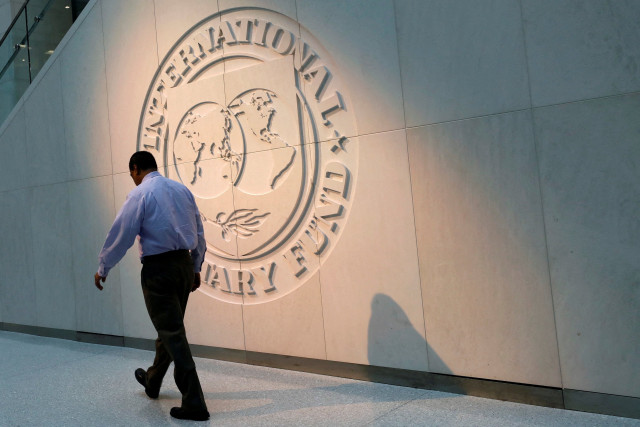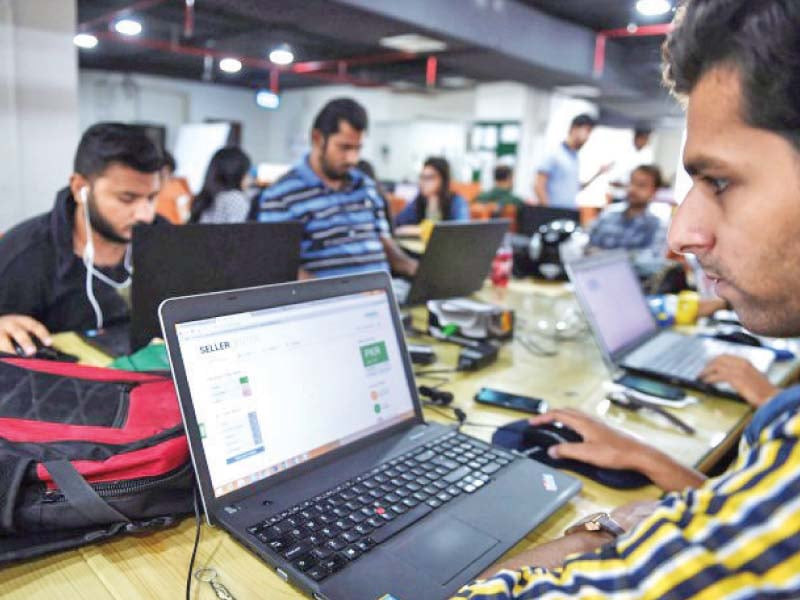STEM revolution: a fix for Pakistan’s handout crisis?
Experts urge following India’s lead and developing a framework for a STEM talent-based economy for the next decade

As the only nuclear-powered Muslim nation nears it’s 999th round of begging for money, it’s worth reflecting what is holding the country back. The nation runs on a weak implementation of tax collection and debt, which results in huge outflow of payments towards interest, pensions, defense, and government expenditures. This leaves little for developmental projects.
The combined spending on education, with all provinces combined, is under five billion rupees. Over 20 million children are out of school. This could mean that taxation reforms are at the center of Pakistan’s reform. In a country of 220 million, there are 2.7 million tax filers and just 7 million tax payers. With paying taxes, citizens lack a relationship with the state and it’s future.
Tax to GDP should be 13 per cent and it is eight per cent, which is 50 per cent below capacity of resources if utilised ethically. The highest income tax slab is charged 32 per cent and the sales tax is 17 per cent, which are both regressive for the one per cent actually holding up the country and then penalising them for buying local goods. Due to lobbyists in the parliament, agriculture is not taxed and gets subsidies for urea.
Due to subsidies around sugar, crop planning is poor and water is misused, meanwhile the export dependent crop of cotton has drastically fallen in output. There is one school of thought that technological problem solving could improve the productivity of the agricultural sector, which in turn would incentivize the one per cent to invest in similar technologies themselves.
Agriculture represents around 22 per cent of the economy, 34 per cent of the labour force, and has yields that are between 40 to 50 per cent worse than the global average. This is a problem that companies such as Farmdar and Jiye Tech intend to solve, as will others as National Incubation Center (NIC) Faisalabad invited AgriTech companies in its inaugural cohort. There are opportunities for crop planning, inputs, yield enhancement, to eliminate food waste in farm-to-fork.
In the most realistic scenario, the parlimentarian that depends on low-outputs in order to justify interest free loans, will never sign off anything that brings efficiency and hard work to the table. Representing just one per cent of the problem, this means that there are no incentives for the elite of Pakistan, most of whom inherited wealth through deals with the British Empire, to lobby for reform that saves Pakistan from the annual embarrassment of handouts.
“Regulatory capture, guaranteed returns, subsidised inputs, state-backed cartels, and monopolies are sponsored by chambers of commerce, biz councils, and industry-specific associations,” said Babar Khan Javed, a director of Z2C Limited. “Pakistan doesn't need aid, it needs to fix it's own asinine ideas on how to run an economy.”
He said that the four men running Pakistan need to develop a framework for a STEM talent-based economy for the next decade. He postulated that in doing so, Pakistan will never have to beg for money ever again, thereby actually acting like an Islamic republic. This is the solution towards increasing the export-led and talent-led GDP for Pakistan.

What is the next productive lever to pull?
In an interview with a news channel, Systems Limited chief Asif Peer stated that freelancers may be bringing in between $500 million to $1 billion into Pakistan. He said that, in bring freelancers into the official record through incentives, the contributions of the ICT sector would near $3 billion annually.
“We’re currently at an annual growth rate of 40 per cent to 50 per cent, which means in five years we can cross $10 billion worth of ICT export earnings,” said Peer. “We first need to tackle the issue of talent supply, which is insufficient to reach this goal. Since COVID-19, the demand for freelancers went up faster than the supply of workers was being trained or graduating. You need graduate or train 40,000 programmers annually to add $1 billion to ICT exports in Pakistan.”
According to the Ministry of Electronics & Information Technology in the Government of India, ICT exports during FY 2021 in the the most populous democracy in the world were $172 billion. A 2019 survey by the National Association of Software and Service Companies found that 1.5 million people graduate with engineering degrees every year in India. According to some estimates, Pakistan produces under 3 per cent of India’s output and that too at a questionable quality.
Can this be fixed?
The Indian Institutes of Technology (IIT) graduates co-founders and chief executives of the $75 billon worth InfoSys, $40 billion worth Flipkart, and $5.5 billion worth Zomato. There is not a single equivalent executive graduate from IBA or LUMS.
Given that government intervention and reform is a pipe dream, the consensus is that market leaders must partner with educational institutions to ensure courses match the needs of the current and future job market. Multi-million dollar companies such as Systems Limited and Walee have signed MoUs with universities around the country to introduce courses that represent industry-academia collaboration.
To speed up the process, venture accelerator Z2C Limited launched fast-track courses with various educational institutions around the country. This year, they launched the Creators Academy with Off The School (OTS) in January, the ACE Digital School in February, and the ZEAL Future Enablement Program at Ziauddin University in March.
OTS runs a school within a mosque of Jamshed Town where nearly two thousand indigent students are enrolled out of which majority of them are hailing from lesser developed areas. At a nominal fee of PKR 1,000-1,500 for entire 6–12-week programs on various in-demand skillsets that will enable to find job opportunities like English Language, Photoshop, Digital Marketing, Programming etc. all being taught by working professionals.
The program recently graduated 12 students out of 25 attendees under a training progran for Google web design, which lasted six weeks. Three of the graduates were hired by Activ8, the largest offshore hub for creative, media, and digital projects under the Publicis Groupe.
Given that Activ8 works on campaigns for Publicis Groupe clients in the MENA region, the ACE Digital School trains new hires to reach regional benchmarks and partake in on the job training. This is the accelerate hiring at Activ8, which onboards roughly 15 new employees every month, as quality digital marketing talent is scarce in the MENA region.
The ZEAL Future Enablement Program at Ziauddin University brings together Activ8 and digital agency East River to facilitate 12-week sprint course trainings that cover digital marketing, creative strategy, media optimization, and the use of various planning tools.
Both Systems and Z2C would be better off integrating with freelancer networks such as Linkstar to facilitate the demand side of the equation, once supply has been generated.
Similar to India, which have over 20 campuses nationwide for IIT, the universities of Pakistan will also need to build more physical campuses. To solve for limited seats on campus, they would also need to introduce their own massive open online courses similar to MIT, edX, and Coursera.
Reforms will be required to ensure more children go to school as will support for initiatives such as the Orange Tree Foundation and The Citizens Foundation, which support college-going and pre-college students respectively. In solving the global STEM talent crunch, Pakistan will enable it’s own economic empowerment and uplift the underserved communities.
Ali Asad Sabir is a political economist and senior research assistant at the Institute of Development and Economics Alternatives (IDEAS). All facts and information are the sole responsibility of the writer.



















COMMENTS
Comments are moderated and generally will be posted if they are on-topic and not abusive.
For more information, please see our Comments FAQ